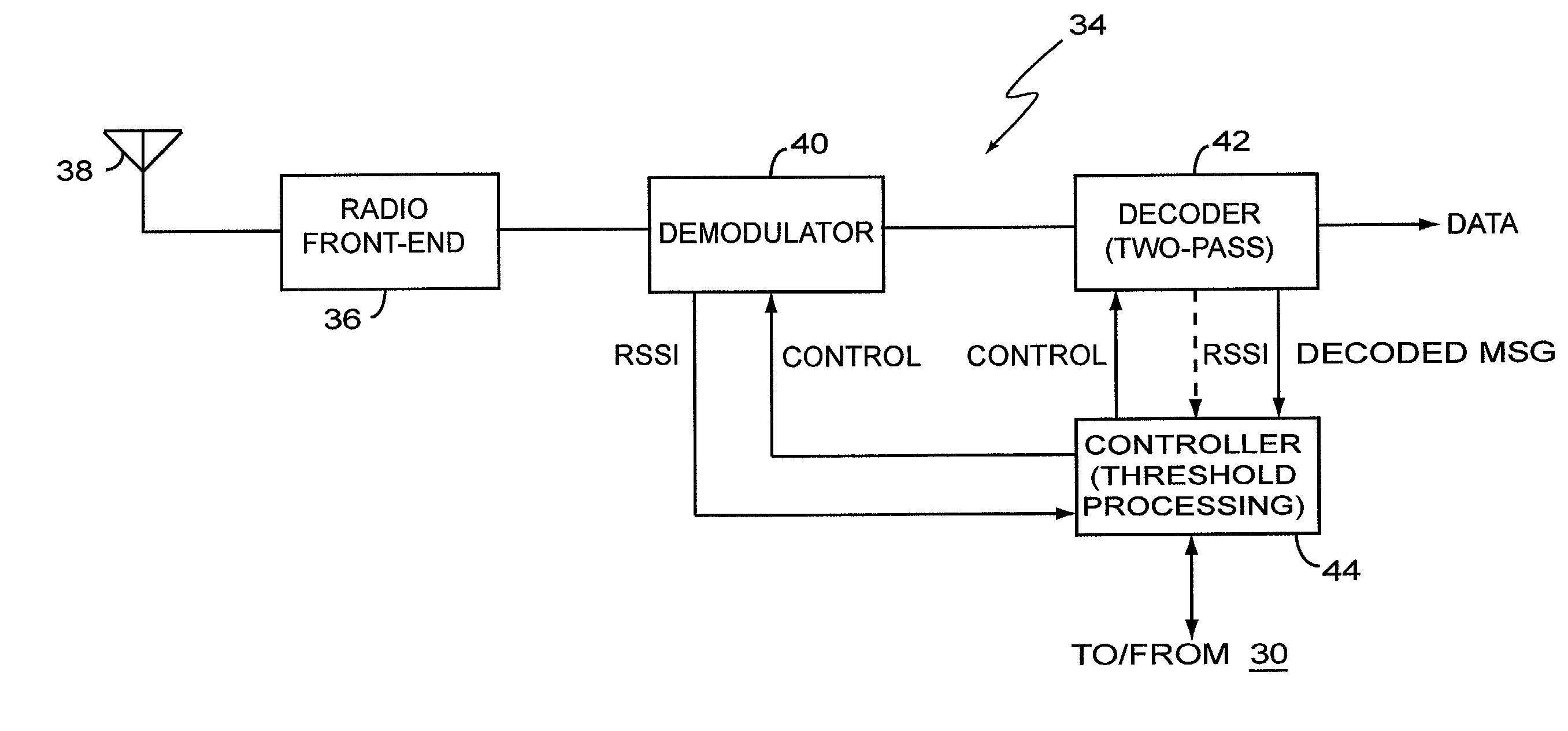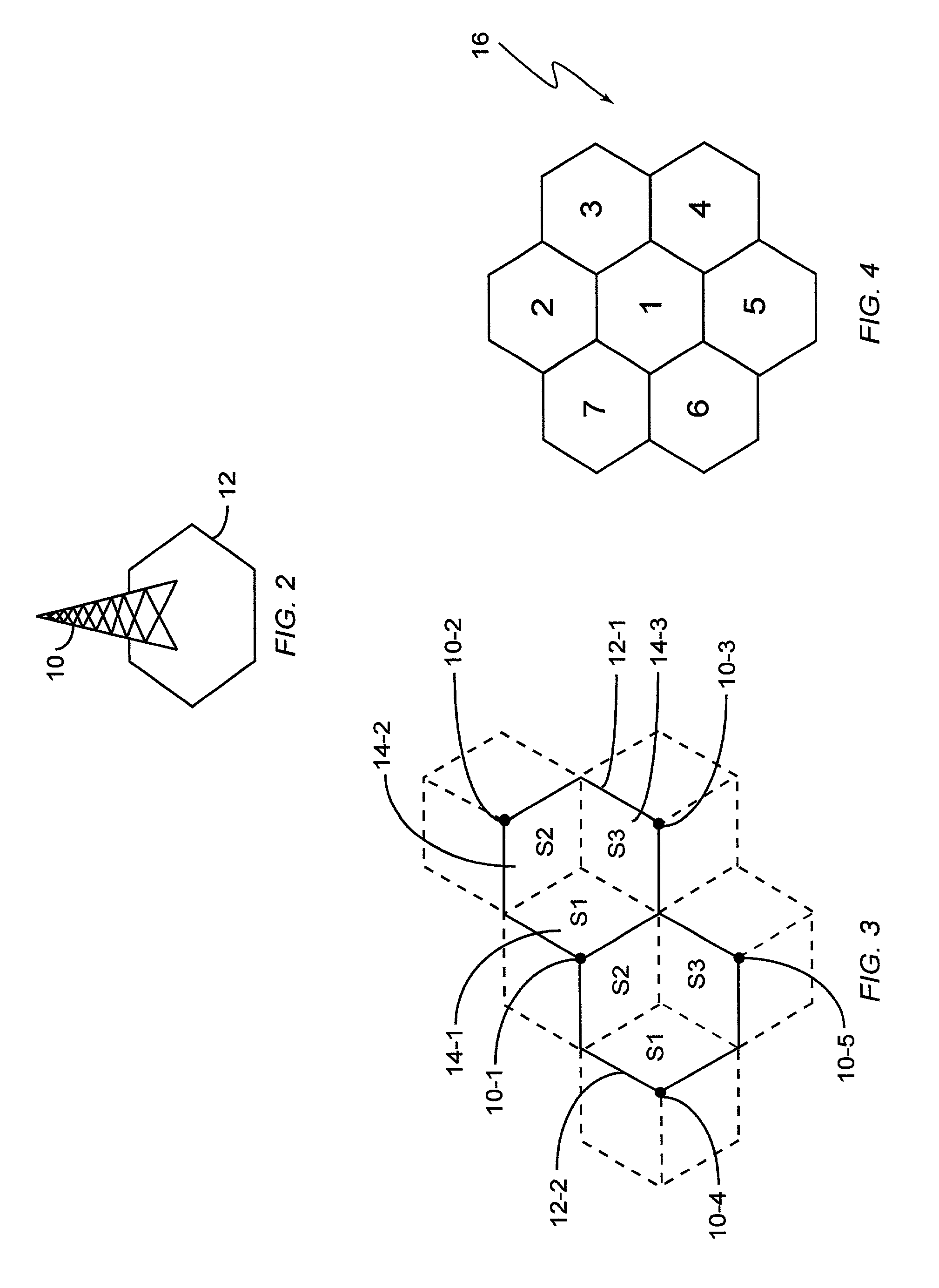Efficient radio reception method for automatic frequency planning
- Summary
- Abstract
- Description
- Claims
- Application Information
AI Technical Summary
Benefits of technology
Problems solved by technology
Method used
Image
Examples
Embodiment Construction
[0026]Referring now to FIG. 1, wireless communications systems generally use a defined portion of radio frequency spectrum to support wireless signaling with the various mobile stations and other wireless devices supported by the network. In a common approach, wireless communication networks that employ time division multiple access (TDMA) techniques divide the allocated radio spectrum into a plurality of radio channels 6, with each channel typically comprising an uplink / downlink frequency pair. Often, the channels 6 are segregated into one or more channel groups 8. In understanding how these channel groups 8 are used within a given wireless communication network to provide communication service coverage over a given coverage area, one must first understand some of the basic network building blocks.
[0027]FIG. 2 illustrates a wireless network base station 10, and its corresponding radio coverage area 12, which is commonly referred to as a “cell”12. While FIG. 2 depicts the base stati...
PUM
 Login to View More
Login to View More Abstract
Description
Claims
Application Information
 Login to View More
Login to View More - R&D
- Intellectual Property
- Life Sciences
- Materials
- Tech Scout
- Unparalleled Data Quality
- Higher Quality Content
- 60% Fewer Hallucinations
Browse by: Latest US Patents, China's latest patents, Technical Efficacy Thesaurus, Application Domain, Technology Topic, Popular Technical Reports.
© 2025 PatSnap. All rights reserved.Legal|Privacy policy|Modern Slavery Act Transparency Statement|Sitemap|About US| Contact US: help@patsnap.com



